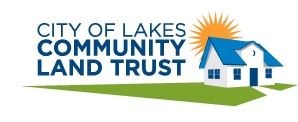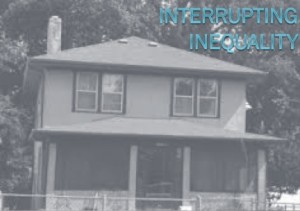Interrupting Inequality through Community Land Trusts
Community Land Trusts (CLT) are a shared equity, non-speculative housing model, which has been suggested as a viable model for enabling low-income households to secure long-term, stable homeownership, and thus, achieve the ‘American Dream’. Much attention has been paid to the economic structures inherent in the model that enable these households to obtain housing, however, the psychosocial contingencies associated with the attainment of housing have thus far been overlooked in the literature. Through secondary data analysis of survey data collected by the City of Lakes CLT (CLCLT) in Minneapolis, this study aims to fill this gap. Surveys were distributed by CLCLT to all associated homeowners by mail and email in 2010 and 2012 with 41 homeowners responding in 2010 (a response rate of 41%) and 79 homeowners in 2012 (a response rate of 63) with twenty-nine households overlapping between the two samples. In this analysis we found that instead of an ‘end’ in and of itself, the achievement of stable, long-term housing on behalf of these households was more of a ‘means’ to a new ‘end’. This occurred mainly through two simultaneous, yet distinct processes. First, households found themselves in a new housing niche defined by different forms of support, stability  and opportunities not previously available or not previously perceived as available. Secondly, we found that there was a psychological shift or a development of social psychology capital that resulted from achieving the goal of homeownership. The combination of the shift in the belief of one’s capabilities as well as the environmental and structural changes experienced put households in a position where new opportunities presented themselves, or old ‘opportunities’ seemed more obtainable. Furthermore it appears these social psychology and opportunity shifts in the lives of the household have intergenerational implications as they are changes in the child(ren)’s environment as well. In add
and opportunities not previously available or not previously perceived as available. Secondly, we found that there was a psychological shift or a development of social psychology capital that resulted from achieving the goal of homeownership. The combination of the shift in the belief of one’s capabilities as well as the environmental and structural changes experienced put households in a position where new opportunities presented themselves, or old ‘opportunities’ seemed more obtainable. Furthermore it appears these social psychology and opportunity shifts in the lives of the household have intergenerational implications as they are changes in the child(ren)’s environment as well. In add
 ition, we find that these revelations present a new twist in our conception of the ‘American Dream’: the achievement of homeownership does not necessarily equate to the fulfillment of the American Dream, but instead, the ability to dream and the pursuit of the American Dream seems to occur after long-term stable housing has been achieved.
ition, we find that these revelations present a new twist in our conception of the ‘American Dream’: the achievement of homeownership does not necessarily equate to the fulfillment of the American Dream, but instead, the ability to dream and the pursuit of the American Dream seems to occur after long-term stable housing has been achieved.
This research is being conducted with the other members of The Housing Environments Research Group, a research center directed by Dr. Susan Saegert housed in the Center of Human Environments at the CUNY Graduate Center.
Papers In Progress:
- Hackett, K., Saegert, S., Dozier, D., Marinova, M. (2017). Housing possible selves: A CLT’s alternative political economics ground ontological security and emergent possibilities. Under editorial review, Housing Studies.
- Saegert, S., Hackett, K., Maor, E. and Pryiomka, K. (2017). Interrupting Inequality through Community Land Trusts: Collective Goods and Forms of Capital Accumulation. Under editorial review, XXXX.
Past Presentations:
- Hackett, K., Saegert, S. and Maor, E. (2016, April). Interrupting Inequality. Paper presented at the annual meeting of the Urban Affairs Association, San Antonio.
- Hackett, K., Saegert, S., Dozier, D., and Marinova, M. (2014, March). Community land trusts: So much more than housing and a twist in the American Dream Paper presented at the annual meeting of the Urban Affairs Association, San Antonio.
- Dozier, D., Saegert, S., Hackett, K., and Marinova, M. (March, 2014). Belonging in US paradigm of propertied citizenship: Community land trusts residents homeownership experience. Paper presented at the Urban Affairs Annual Conference, San Antonio, TX.
- Oakley, D., Hackett, K., and Saegert, S. (March 2014). Community land trusts: Interrupting Inequality. Presentation for webinar hosted by the National Community Land Trust Network.
